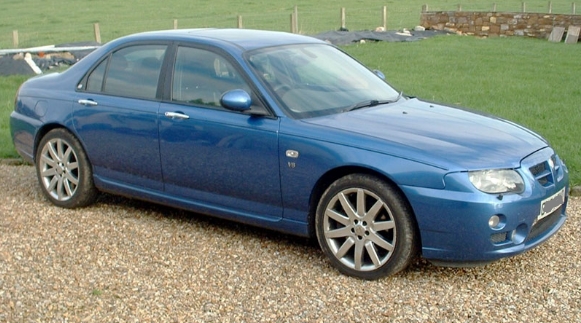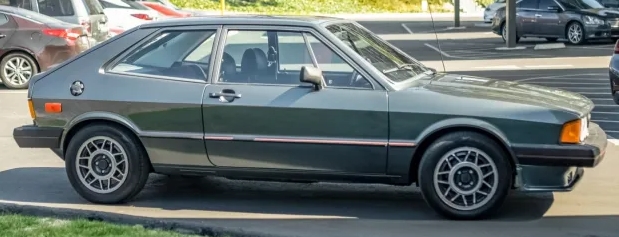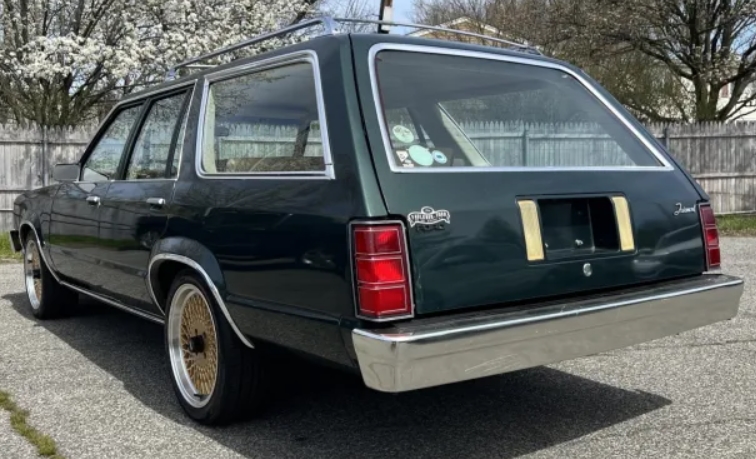The Phoenix Saloon: The Brief, Brilliant Evolution of the MG ZT
In the turbulent landscape of the British motor industry at the turn of the 21st century, few cars symbolize both the defiant spirit and the ultimate tragedy of the era quite like the MG ZT. Born from the ashes of BMW’s ownership of Rover and forged in the crucible of the newly independent MG Rover Group, the ZT was a masterful act of engineering transformation. It took the genteel, comfort-oriented Rover 75 and, with limited resources, turned it into one of the finest-handling and most engaging sports saloons of its time. Its evolution, though compressed into a mere four years from 2001 to 2005, was a story of ambition, innovation, and a desperate, brilliant fight for survival.
The Genesis: Project X10 (2001)
The story of the MG ZT begins with its antithesis: the Rover 75. Launched in 1998 under BMW’s stewardship, the 75 was a product of meticulous, high-budget German engineering, designed to be a paragon of British luxury. With its plush ride, elegant chrome detailing, and wood-veneer dashboard, it was aimed squarely at a mature audience seeking comfort over cornering prowess.
When BMW divested itself of the company in 2000, the new MG Rover Group inherited a superb base car but faced a critical problem: a brand portfolio that skewed heavily towards the traditional and dated. The MG nameplate, a bastion of British sports cars, was being under-utilized. The solution, born of necessity and ingenuity, was codenamed Project X10 (for the saloon) and X11 (for the estate). The mission: to weaponize the Rover 75.
This was no mere badge-engineering exercise. MG Rover’s engineers, led by the legendary chassis expert Rob Oldaker, fundamentally re-engineered the 75’s dynamics. The soft, compliant suspension was replaced with a far more aggressive setup: spring rates were increased by up to 70%, dampers were stiffened, and thicker anti-roll bars were fitted. The steering rack was sharpened for a more direct, communicative feel. The result was a car that felt taut, agile, and utterly transformed.
The exterior and interior were similarly re-imagined. The Rover’s chrome was banished in favor of a body-colored or technical black finish. A purposeful mesh grille replaced the stately chrome vertical bars, while a subtle boot-lip spoiler and larger, more aggressive alloy wheels completed the look. Inside, the polished walnut was swapped for technical finishes like “Technical Grey” or “Trophy Blue,” and the sumptuous leather seats were replaced by heavily bolstered, supportive sports seats.
The Initial Launch Line-Up: 2001-2003
The MG ZT and its estate sibling, the ZT-T, were officially launched in the summer of 2001 to widespread critical acclaim. The press was astonished by the car’s dynamic prowess, praising its exceptional chassis balance, grip, and steering feel, which many reviewers rated as superior to its German rivals like the BMW 3 Series and Audi A4.
The initial model range was simple yet focused on performance:
Models and Engines (2001):
MG ZT 190: The flagship model at launch. It used a fettled version of the 2.5-litre Rover KV6 engine, producing 187 bhp (marketed as 190 PS). This quad-cam, 24-valve V6 was known for its smooth power delivery and charismatic engine note, making it the perfect heart for the new sports saloon. It was available exclusively with a 5-speed manual gearbox.
MG ZT CDTi: Catering to the booming European diesel market, this model used the highly-regarded 2.0-litre M47R engine, a common-rail turbodiesel sourced from BMW. Initially offered with 114 bhp, it provided excellent fuel economy and immense mid-range torque, making it a capable long-distance cruiser.
Trim Levels:
Throughout its life, the ZT’s trim structure was based on a standard model with optional “plus” packs.
Standard: The base car.
“+” (Plus) Pack: This quickly became the de facto standard specification for most buyers. It added key features such as air conditioning, 18-inch alloy wheels (on the 190), front fog lights, electric rear windows, and a leather-trimmed steering wheel. Models were typically designated by their engine, followed by the “+”, such as the ZT 190+.
SE Pack: Available as an add-on to the “+” models, this was the top-tier specification. It included luxury features such as automatic climate control, a trip computer, reverse parking sensors, an upgraded Harman Kardon sound system, and sometimes xenon headlights.
Broadening the Range: 2002-2003
Recognizing the need for more accessible entry points into the range, MG Rover expanded the ZT line-up in 2002.
New Models and Engines (2002):
MG ZT 160: This model introduced a turbocharged version of the 1.8-litre K-Series four-cylinder engine, producing a healthy 158 bhp. While it lacked the sonic appeal of the KV6, its lighter weight over the front axle gave the ZT 160 even sharper turn-in and was praised for its punchy, responsive performance.
MG ZT 120: The new entry-level model featured a naturally aspirated 1.8-litre K-Series engine with 118 bhp. While not a performance leader, it made the ZT’s exceptional chassis and sporty looks available to a much wider audience and was particularly popular in markets where engine size dictated taxation.
MG ZT 180 Sports Auto: To cater to buyers wanting an automatic transmission, MG Rover introduced the ZT 180. It used a slightly de-tuned 175 bhp version of the 2.5-litre KV6 engine, paired with a 5-speed JATCO automatic gearbox that featured a “sport” mode.
MG ZT CDTi 135: The diesel engine received a welcome power boost, with a re-mapped ECU increasing output to 129 bhp (marketed as 135 PS). This enhanced performance without sacrificing economy and became the more popular choice for diesel buyers.
During this period, MG Rover also introduced its “Monogram” personalization program, allowing customers to order their ZT in a vast range of exclusive super-tallic, pearlescent, and “chromactive” paints that changed color depending on the light, along with bespoke interior trim options.
The Ultimate Evolution: The MG ZT 260 (2003)
The most audacious and exciting chapter in the ZT’s evolution came in 2003 with the launch of the ZT 260. MG Rover, in a moment of pure engineering bravura, decided to create a true V8-powered muscle saloon. The front-wheel-drive platform of the Rover 75 was simply not up to the task of handling the power and torque of a large V8. The solution was radical and expensive: a complete conversion to a rear-wheel-drive architecture.
Engineers widened the transmission tunnel, developed a new multi-link rear suspension, and sourced a powertrain from an unlikely partner: Ford. The heart of the ZT 260 was the 4.6-litre, two-valve Modular V8 from the Ford Mustang, chosen for its compact dimensions, reliability, and low-end torque. It produced 256 bhp (hence the “260” name) and a thunderous 410 Nm of torque.
The ZT 260 was a true “Q-car.” Visually, it was remarkably subtle, distinguished only by unique 18-inch alloy wheels, a slightly deeper front bumper, and the tell-tale quad exhaust pipes. It wasn’t a high-revving track machine like a BMW M3; it was a British muscle car, a comfortable, long-legged grand tourer with a lazy V8 burble and the ability to effortlessly surge past traffic. It remains the ultimate expression of the ZT concept and is now a highly coveted modern classic.
Project Drive: The Facelift (2004-2005)
By 2004, MG Rover was under immense financial pressure. “Project Drive” was an internal cost-saving initiative that led to a facelift across the range. The ZT’s distinctive and complex quad-headlamp design was replaced by a more conventional, single-unit projector lamp setup. The front and rear bumpers were redesigned, and the interior received a revised centre console and new trim options.
While the new look was intended to modernize the car, many purists felt it lost some of the original’s character. The model range and trim levels largely carried over from the pre-facelift era, with the ZT 120, 160, 190, CDTi 135, and the V8 260 all continuing until the end.
.

.
The End of the Line: April 2005
The facelifted ZT’s production life was tragically short. In April 2005, despite ongoing negotiations for a partnership with a Chinese firm, MG Rover Group collapsed into administration. Production at the Longbridge plant ceased overnight, and the story of the MG ZT came to an abrupt and premature end.
The car that had started as a clever re-engineering of a luxury saloon and evolved into a world-class V8 muscle car was gone. In its four-year lifespan, it had proven that with passion and expertise, British engineering could still produce cars that could compete with, and in some aspects beat, the very best in the world. The MG ZT remains a poignant “what if” – a testament to the skill of its creators and a cherished icon for enthusiasts who appreciate a car with genuine soul, born from defiance and engineered for the drive.







